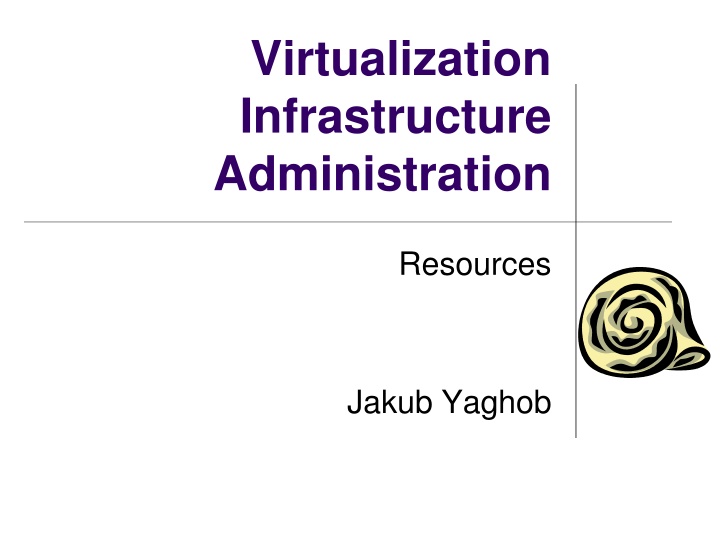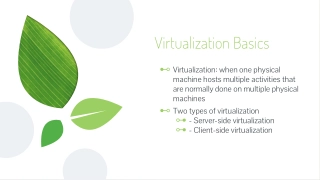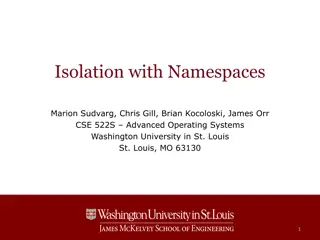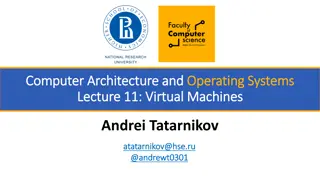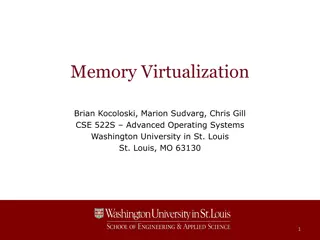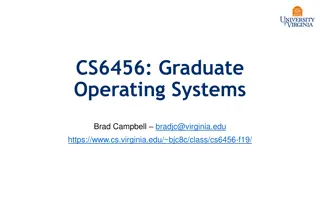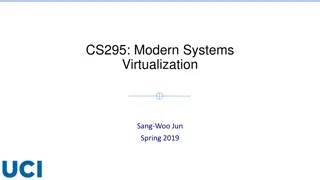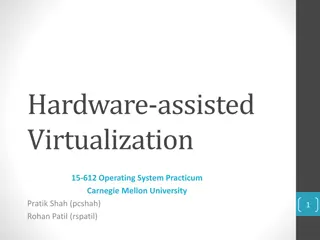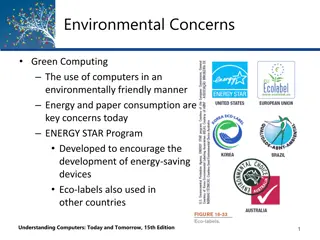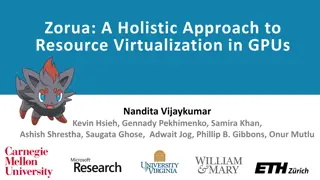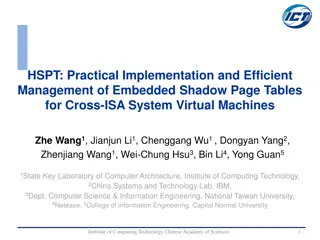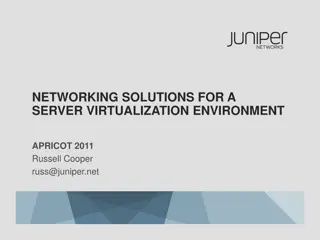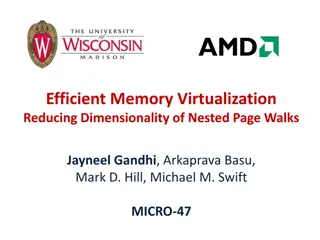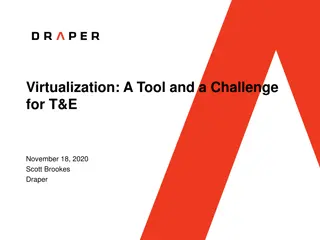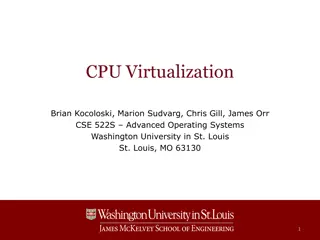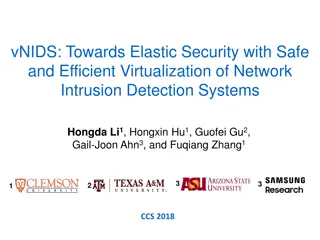Comprehensive Guide to Virtualization Infrastructure Administration
Explore the world of virtualization infrastructure administration, covering resources such as CPU, memory, storage, and network I/O. Learn about resource management, CPU scheduling, memory efficiency, and virtual memory management in virtualized environments. Dive into topics like vCPU mapping, proportional-share scheduling, limits, reservations, shares, and the efficient use of virtual memory.
Download Presentation

Please find below an Image/Link to download the presentation.
The content on the website is provided AS IS for your information and personal use only. It may not be sold, licensed, or shared on other websites without obtaining consent from the author.If you encounter any issues during the download, it is possible that the publisher has removed the file from their server.
You are allowed to download the files provided on this website for personal or commercial use, subject to the condition that they are used lawfully. All files are the property of their respective owners.
The content on the website is provided AS IS for your information and personal use only. It may not be sold, licensed, or shared on other websites without obtaining consent from the author.
E N D
Presentation Transcript
Virtualization Infrastructure Administration Resources Jakub Yaghob
Resources Main resources CPU Memory I/O resources Storage I/O Network I/O
Resource management Resource pool Resource allocation Provides resources for VMs and child pools Hierarchical structure Business requirements of organization Expandable? YES VMs and subpools can draw from this pool s parent NO VMs and subpools can draw only from this pool, even if its parent has free resources Resource allocation for VM Fine tuning of an application
CPU management vCPU mapping Each vCPU from VM mapped to HEC (HW execution context) HEC Hypervisor scheduling entity Core/HT thread All vCPUs in the VM scheduled at the same time HEC HEC HEC HEC
CPU scheduling Proportional-share scheduling Simple virtual-time algorithm Virtual time = usage / share Schedule VM with smallest virtual time Example: 3 VM A, B, C with 3:2:1 share ratio A 2 4 4 6 8 8 8 10 10 B 3 3 6 6 6 9 9 9 12 C 6 6 6 6 6 6 12 12 12
Limits, reservations, and shares Limit Upper bound of consumption, even if underutilized Concrete absolute units Reservation Minimum guarantee, even when system overloaded Concrete absolute units Admission control: sum of reservations capacity Shares More shares greater priority Abstract relative units, only ratios matter
Virtual memory management Virtual memory Mapped by application inside the guest OS Physical memory Host presents physical pages to VMs Machine memory Actual pages allocated by host application guest OS hypervisor
Using memory efficiently Transparent page sharing Hypervisor detects identical pages in VM memory and maps them to the same physical memory No changes to guest OS Shared pages as COW
Guest OS ballooning VMware Tools balloon driver Deallocate memory from VM when memory is scarce Ample memory. Balloon remains uninflated. Guest is forced to page out to its own paging area. The VMkernel reclaims memory. Inflate balloon. (Driver demands memory from guest operating system.) Guest can page in. Host grants memory. Deflate balloon. (Driver relinquishes memory.)
